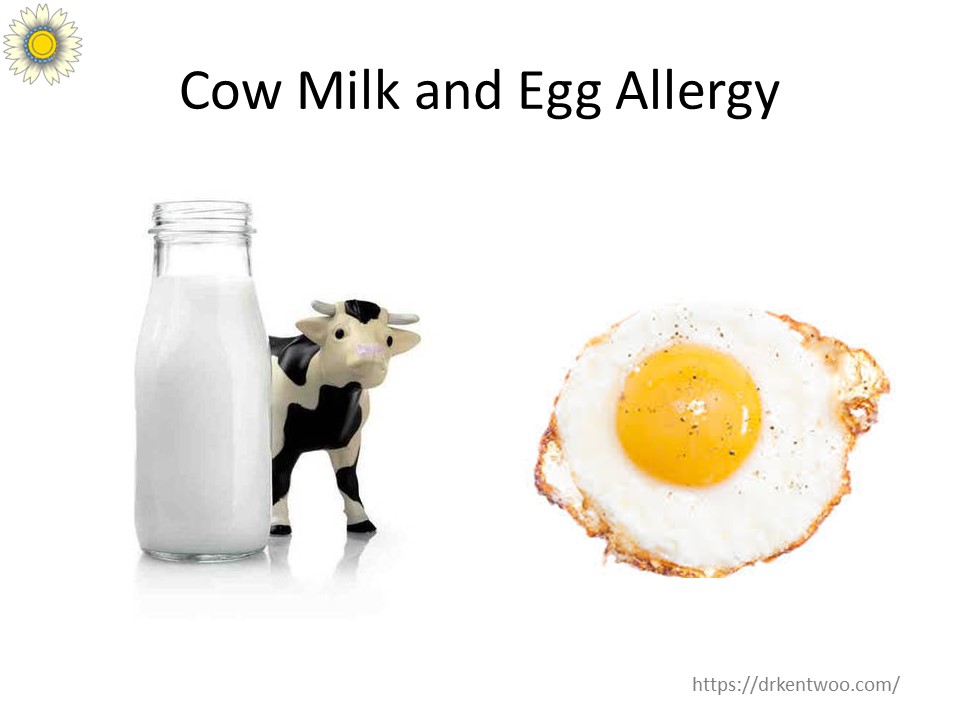Cow’s Milk and Egg Allergy: Can Kids Outgrow It?
Cow’s milk and egg are the two most common food allergies in children. If your child has either of these, you’re probably wondering: Will they outgrow it? How do we confirm the allergy, and is there a way to help them develop tolerance?
Let’s dive into the latest insights on cow’s milk and egg allergies, how they’re diagnosed, and what treatment options are available.
What Are the Symptoms of Cow’s Milk and Egg Allergy?

Reactions to milk or egg can range from mild to severe and may include:
✅ Skin reactions – eczema flares, hives (urticaria), or swelling
✅ Digestive issues – vomiting, diarrhea, or stomach pain
✅ Respiratory symptoms – sneezing, congestion, or wheezing
✅ Anaphylaxis – a severe, life-threatening allergic reaction requiring immediate EpiPen use
If your child has shown any of these symptoms after consuming cow’s milk or egg, it’s crucial to consult an allergy specialist for proper diagnosis and management.
Diagnosing Cow’s Milk and Egg Allergy

At the Allergy Immunology Clinic, we follow a Structured Approach:
1️⃣ Detailed history – We discuss your child’s symptoms, past reactions, and family history of allergies.
2️⃣ Confirmatory allergy testing – This includes a skin prick test and/or specific IgE blood test to check for allergic sensitization.
3️⃣ Dietary advice & management – Based on results, we guide you on food avoidance, reading labels, and emergency preparedness.
4️⃣ Epinephrine training – If your child is at risk for severe reactions, we provide a thorough discussion on using an EpiPen.
However, a positive allergy test doesn’t always mean a true allergy. The gold standard for confirming or ruling out a food allergy is an Oral Food Challenge (OFC).
Can Kids Outgrow Milk or Egg Allergy?
Yes! Many children do outgrow milk and egg allergies, but not all cases are the same. Here’s what we know from research:
✔ Mild cases are more likely to resolve – Children who only experience mild reactions (like eczema or hives) are more likely to outgrow the allergy.
✔ Severe cases may persist – The more severe the reaction (e.g., anaphylaxis), the lower the chance of outgrowing the allergy.
✔ Other allergic conditions play a role – Kids with eczema, allergic rhinitis, or asthma tend to hold on to food allergies longer.
✔ Baked milk & egg can help – Studies show that many kids with milk or egg allergies can tolerate these foods in baked form (e.g., muffins, cakes). Regular exposure to baked milk or egg may help speed up tolerance development.
This is where our treatment protocol comes in.

How We Help Kids Build Tolerance to Milk & Egg
At the Allergy Immunology Clinic, we’ve developed a structured treatment protocol to help kids safely reintroduce milk or egg into their diet.
Step 1: Skin Prick Test for Baked Milk/Egg

We test for allergic sensitivity using a specific baked milk or egg muffin (recipe provided). This helps us determine whether your child is a good candidate for an Oral Food Challenge (OFC).
Step 2: Supervised Oral Food Challenge (OFC)

If the skin test shows mild or moderate sensitivity, we proceed with a carefully monitored food challenge in our clinic. Your child will consume a small, controlled dose of baked milk or egg while we observe for any reactions.
Step 3: Gradual Updosing for Tolerance

If the child tolerates the baked food, we provide:
✔ Guidance on daily ingestion to reinforce tolerance
✔ Regular follow-ups to monitor progress
✔ Future updosing challenges to slowly increase intake
If everything goes well, your child may eventually tolerate more significant amounts of milk or egg and completely outgrow the allergy!
Why Controlling Other Allergies Matters

We’ve found that managing eczema, allergic rhinitis, and asthma plays a huge role in food allergy resolution. When these conditions are under control, our patients tend to see faster improvement in food tolerance.
That’s why we take a comprehensive approach to allergy treatment—because all allergic diseases are interconnected.
Can Probiotics Help with Food Allergy?

Exciting research suggests that probiotics can aid in food allergy resolution. One probiotic we recommend is Duoflora, which contains the proper strains with scientific evidence supporting their role in allergy management.
How Do We Know If the Allergy Has Resolved?
We track progress through regular follow-ups and repeat allergy tests, including:
✔ Skin prick tests – A decreasing reaction size suggests the allergy may be resolving.
✔ Specific IgE blood tests – Lower levels of food-specific IgE indicate improvement.
✔ Final Oral Food Challenge (OFC) – The ultimate confirmation is when your child eats the food without a reaction!

Once the OFC confirms no reaction, your child is encouraged to eat milk or egg regularly to maintain tolerance. We continue monitoring food tolerance at follow-up visits to ensure long-term success.
Take the Next Step: Schedule a Consultation
If your child has a milk or egg allergy, the best thing you can do is get expert guidance. At the Allergy Immunology Clinic, we offer:
✅ Comprehensive food allergy testing
✅ Supervised Oral Food Challenges (OFCs)
✅ Personalized treatment plans for tolerance development
✅ Ongoing support & follow-ups
💡 Don’t let food allergies hold your child back—book a consultation today to explore safe solutions!




